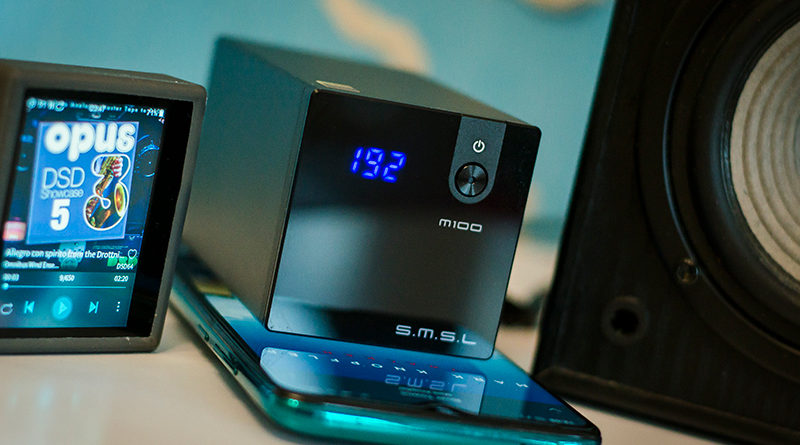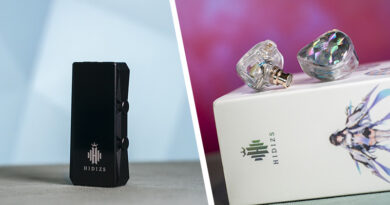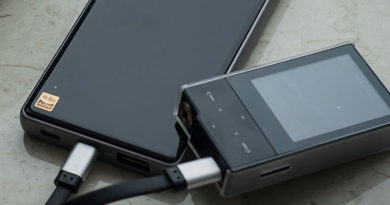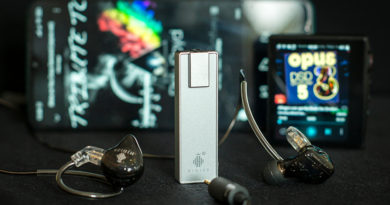SMSL M100 MKII – pure DAC for settled entertainment
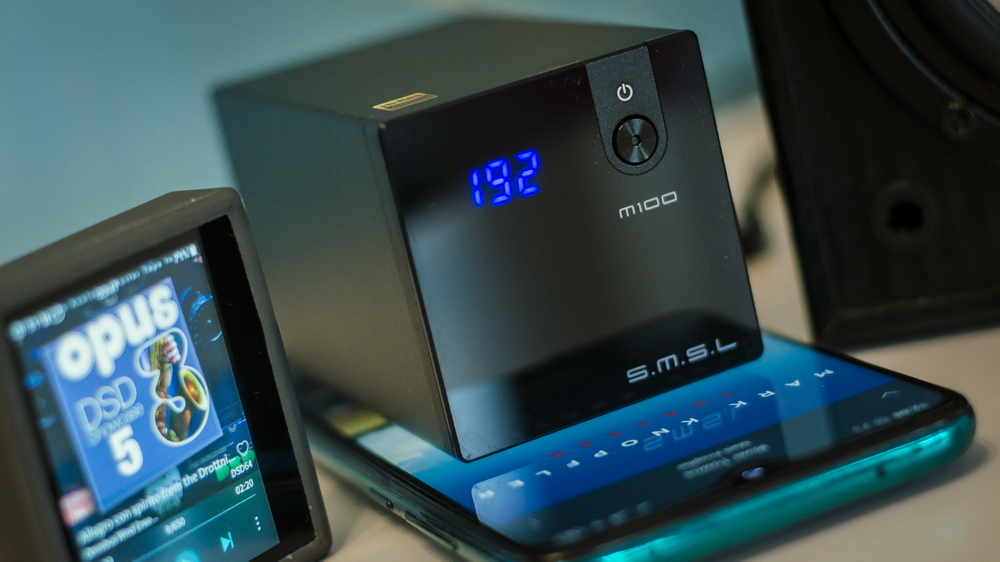
One product from a very much hyped brand in DAC/amp field – SMSL. This is our first experience with the brand as well as the new experience of playing with a pure desktop standalone DAC. All of previous products that we have dealt with were equipped with headphones output, at least. But not this one… SMSL M100 MKII is designed to be used only with active speakers or as a preamp for home audio system, not providing any types of outputs besides RCA. Such products do have the demand on the market, especially for those who have desktop PC’s and well arranged work place. In fact, we are not one of those and mostly shifting around with laptops in hands, leaving no chance for fixed setups. Anyway, this doesn’t mean that M100 MKII cannot do its job in pair with a smartphone or digital audio player and active speakers. So be it… We would try all possible scenarios to check how capable it is.
As to SMSL, we think that it doesn’t require any introduction for masses since this brand is one of the most popular ones in DAC/amp fields with lots of solutions with different form factors, functionality, hardware base and price tags. If to ask someone involved into this hobby, surely SMSL would be named among first originating from China. In future, we would definitely hunt for more sophisticated SMSL devices that interest us the most in its large product range.
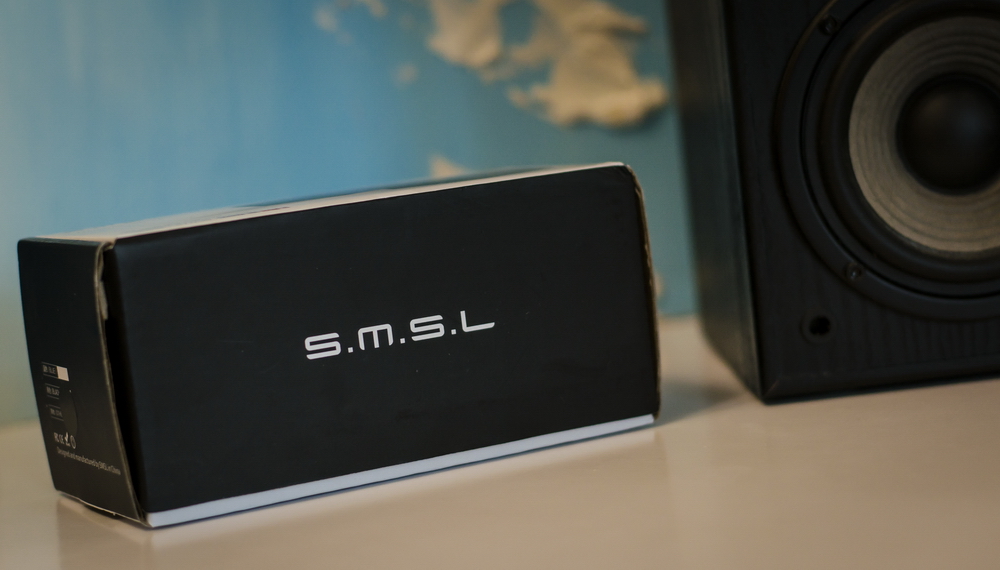
SMSL M100 MKII specifications:
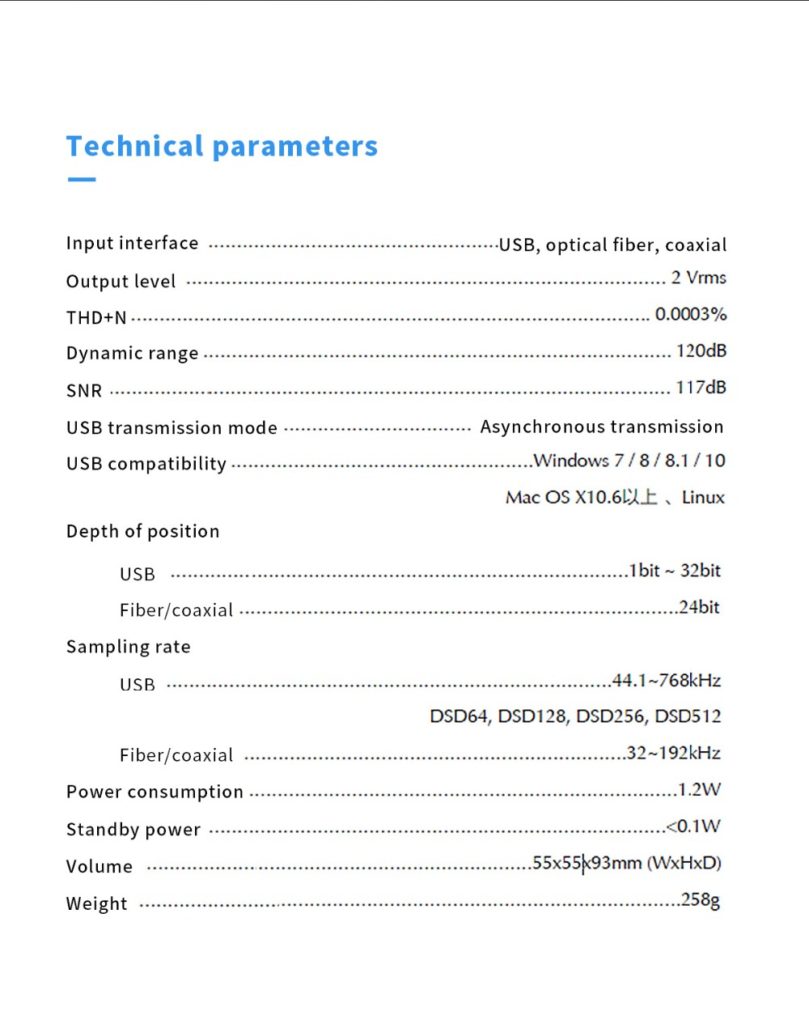
Here is the description of differences between first gen and second gen of M100:

So, second generation have switched from AKM4452 DAC chip to ESS SABRE9018Q2C which is usually perceived and described as more precise on details but might sound a bit more cold and sharp. We do not have a possibility to compare between the two but we would describe sound signature further in this article.
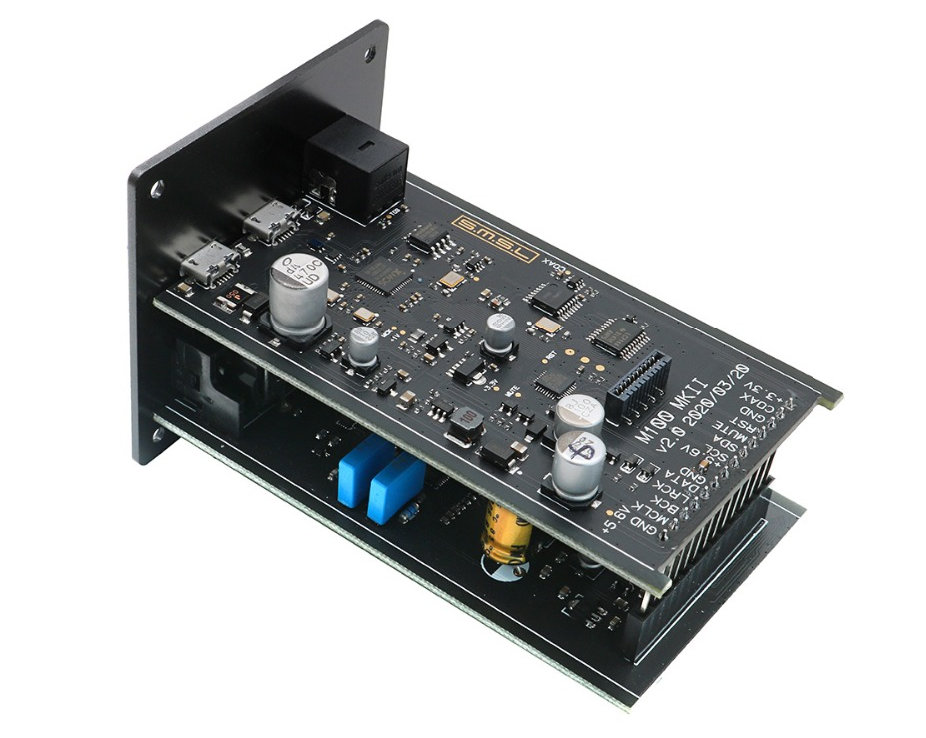
Some additional technical details:
- XMOS 2nd generation USB Audio solution
- Supports PCM signal up to 32bit/768kHz and native DSD up to DSD512
- Can be hooked up with smart phones via OTG USB input
- Two ultra-low phase noise crystal for 44.1/48kHz multiple frequencies
- High performance 32bit/768kHz DAC (SABRE9018Q2C) for high dynamic range and more details
- Built-in high-efficiency power module and lots of low-noise LDOs provides pure power for analog circuit
- Aux power supply for phones connection
- Lots of audio grade components, include MELF resistors, NP0 capacitors
- Gold-plated jacks

Packaging and design:
Not really sure whether all SMSL devices have unified type of packaging but M100 box didn’t impress too much in particular. It does its job of protecting the device during the transportation but not that neat and attractive as other brands regularly use. What is good that it is definitely small and saves transportation cost. Inner compartment has soft insert and split in two parts – one for M100 itself and the other one is for the cable.
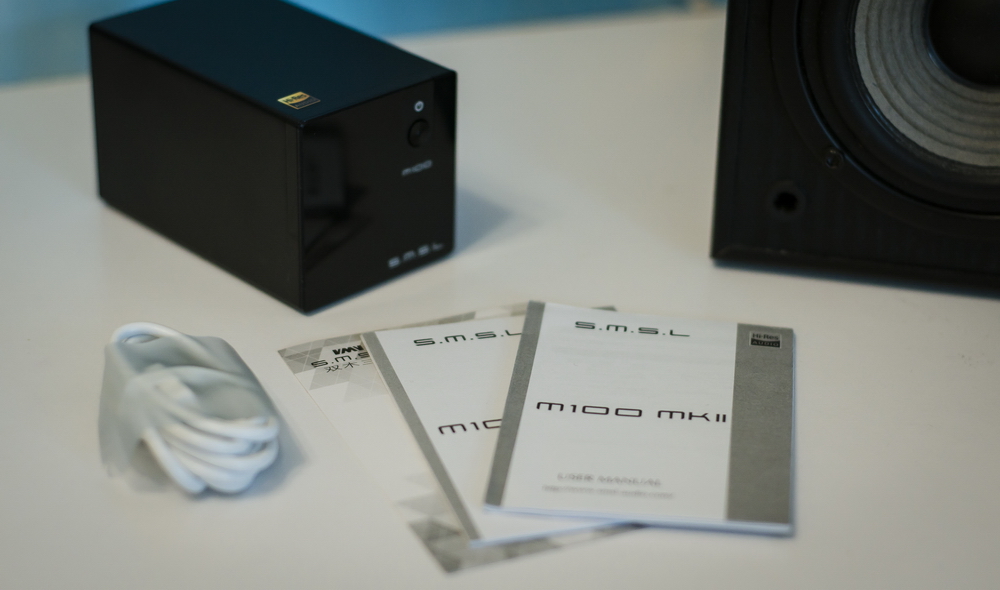
The entire list of accessories looks like this:
- M100 MKII DAC
- USB type A -> microUSB cable
- user manual
Nothing else. The package is really a minimalistic one and all the rest of accessories should be bought separately. We would recommend SMSL to consider adding coax / optical cables at least to make this set more appealing for a customer…
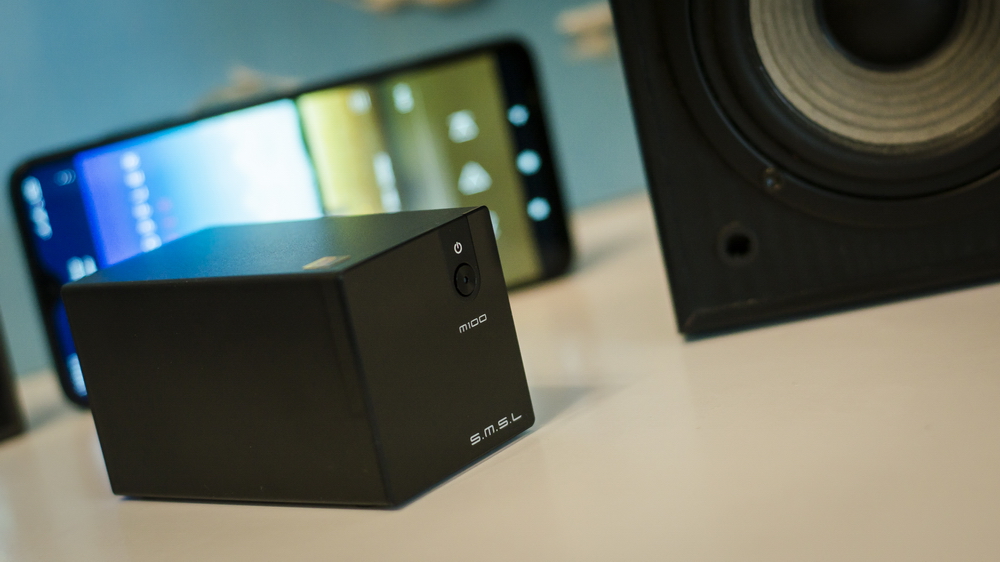
M100 MKII is fully made of aluminum with glass panel at front which adds interesting element to such design. There is absolutely no rattle, no moving parts and no gaps between front panel and aluminum shell. Back side contains all I/O and power ports. Coaxial, optical, USB data, USB power are the inputs while RCA are the only available outputs.
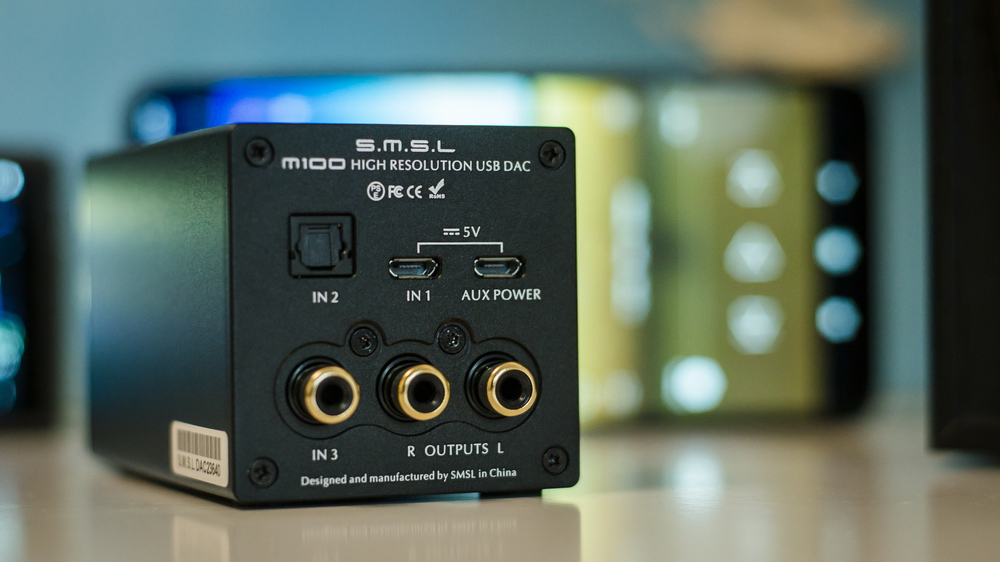
All ports and their labels are neatly cut and precisely printed. Four screws in corners hold this construction together. Front glass panel, besides being a central design element, hides and protects small LED indicators behind it. Single control button with LED indicator at its center is located on the right. Bottom side has rubber legs to leave some space between device and surface.
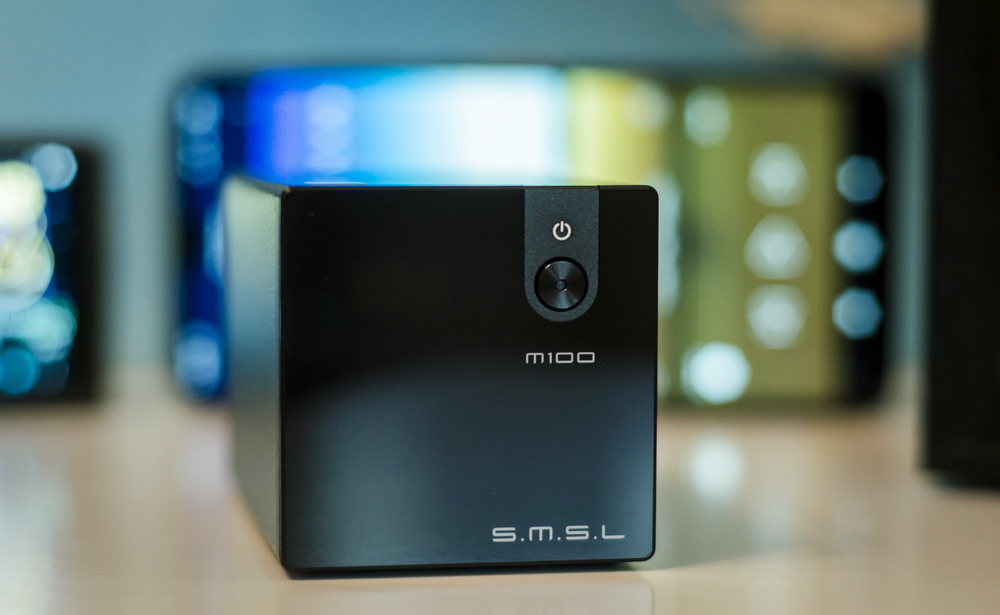
In overall, M100 MKII looks good, perfectly crafted and makes a good impression by its high build quality. It is kind of small, but at the same time unexpectedly heavy and tightly packed piece of technology.
Device in use:
First of all, there is no power adapter included to this bundle while the device requires one for the most stable and interference free operation. Any 5V|1A and higher would do, which should be connected to a separate USB power port. Unfortunately, M100 MKII still uses microUSB type of port and what is even worse – closely located to another microUSB port for data. It means that only cables with straight type of connector shells would fit at the same time in case of we feeding data from audio source over USB.
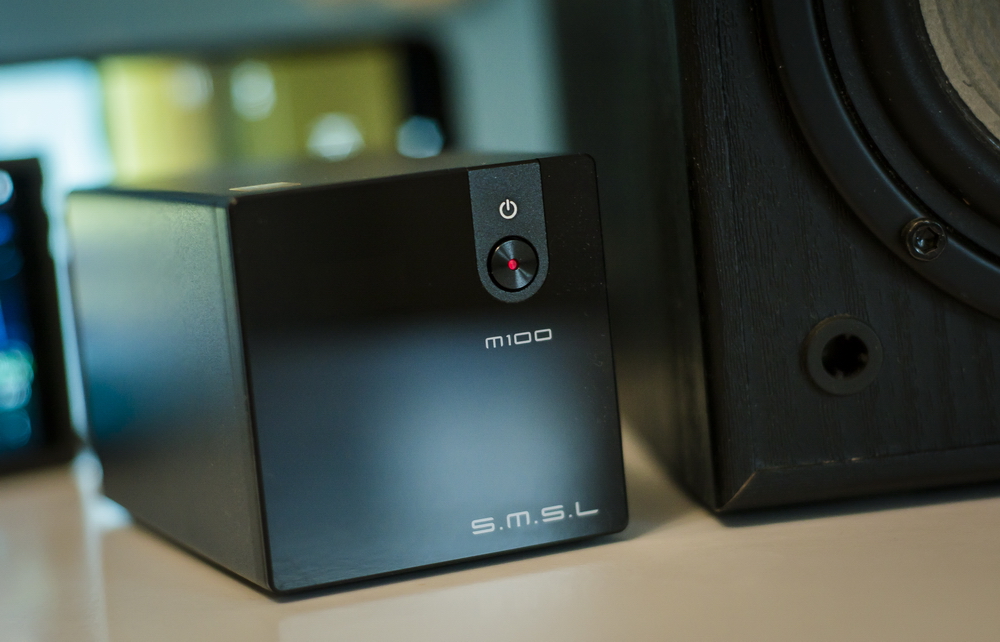
When power is supplied, LED indicator would turn red and long button press would bring M100 alive. Each further short button press would change source input and another long press would activate standby mode. The only role of a LED “screen” is to show track quality and input source. As simple as that, no other functions.
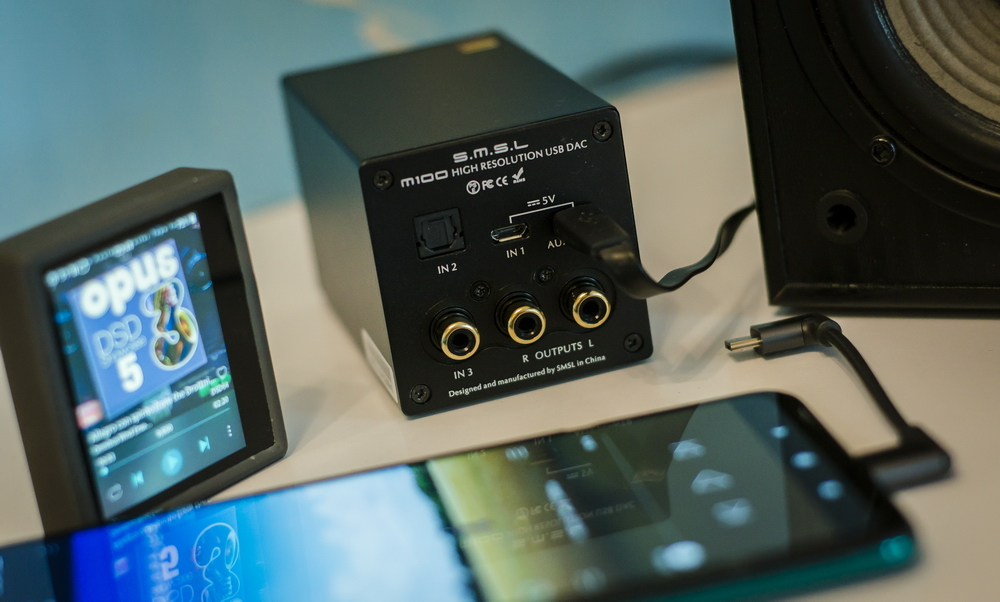
As seen from the specs, the most of the audio quality is supported over USB input – 32bit/768kHz, DSD512. Optical / coaxial inputs are limited to PCM 24bit/192kHz only. Although, the peculiar thing is that native Windows 10 driver would only act in 32/768 mode with no possibility to switch to other quality which is not very convenient while using something like Foobar2000. Such software would prevent tracks with lower audio quality to be played over Wasapi transporter unless the conversion is allowed (which is bad). Therefore, in order to have bit perfect stream and best audio quality we would have to use ASIO driver provided by SMSL. It is a good way and we are very glad that such driver is available but the main flaw of such drivers is larger audio lag when watching videos. We had to play with size of buffer to get the acceptable sync between audio and video while watching videos.
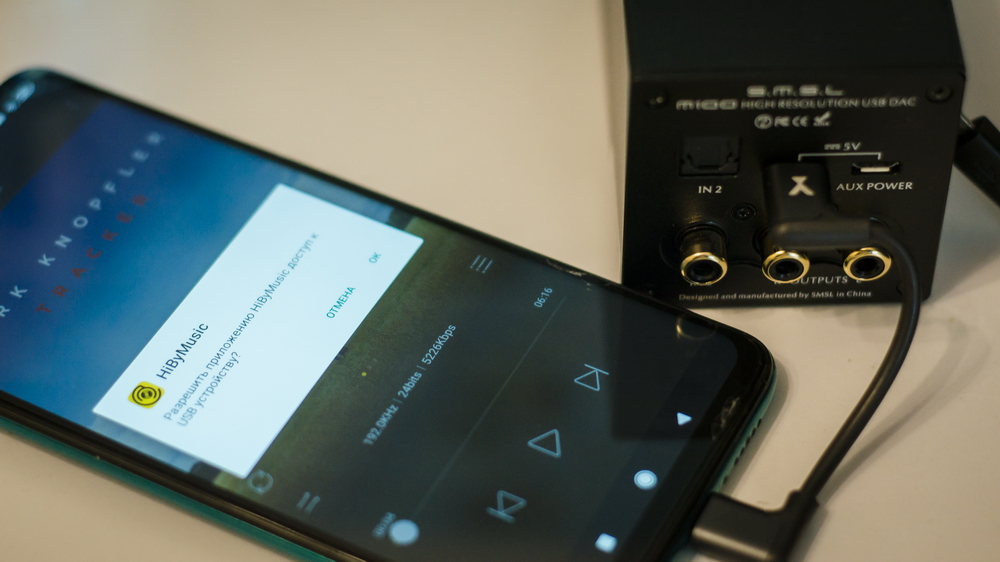
Another problem that we have faced is that M100 MKII couldn’t connect to our Hidizs AP80 DAP in OTG USB DAC mode. We never had any issues with other DACs and AP80 before, this is the first device that couldn’t make it. Personally, we think that the problem is actually on the side of AP80. It might have rejected the connection since M100 declares itself as 32/768 DAC which we doubt that is supported by such an old DAP. On the other hand, no problems with the same type of OTG connection to 2 years old Xiaomi Redmi Note 8 Pro Android smartphone. Hiby Music app identifies M100 correctly and sends bit perfect stream over USB. No problems with changing between different track quality and audio formats.
M100 MKII doesn’t tend to heat in long time operations, stays stable in all modes and with all types of audio formats. We haven’t found any glitches, disconnections, clicks or noises during its use.
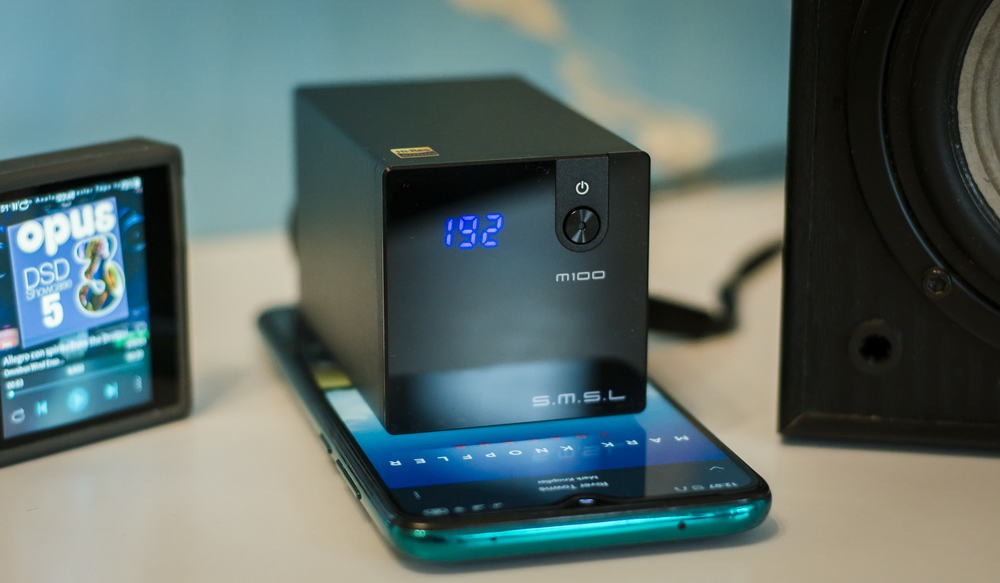
Sound quality:
Test setup: in order to carry out some adequate tests we have used AudioTechnica ATH M50 headphones connected to RCA outputs of M100. Why? Because using active speakers would not allow to evaluate this device as we got used to when working with different DAPs and IEMs. Therefore, having headphones connected instead of active speakers told us much more about M100 MKII…
Lows and midbass:
M100 MKII is very capable of resolving this range with large amount of textures and details and at the same time delicately deliver bass with well-outlined boundaries in just-the-right amount. Extension is very good, bass is decaying neither too fast or too slow. This range has good clarity, large volumetric feel and doesn’t ted to mix with mids and treble. Bass is not accented but fully perceptible, making the stage wider. Midbass is very good as well: adequately tight and powerful. Dynamics and articulation is enough for natural reproduction of drums.
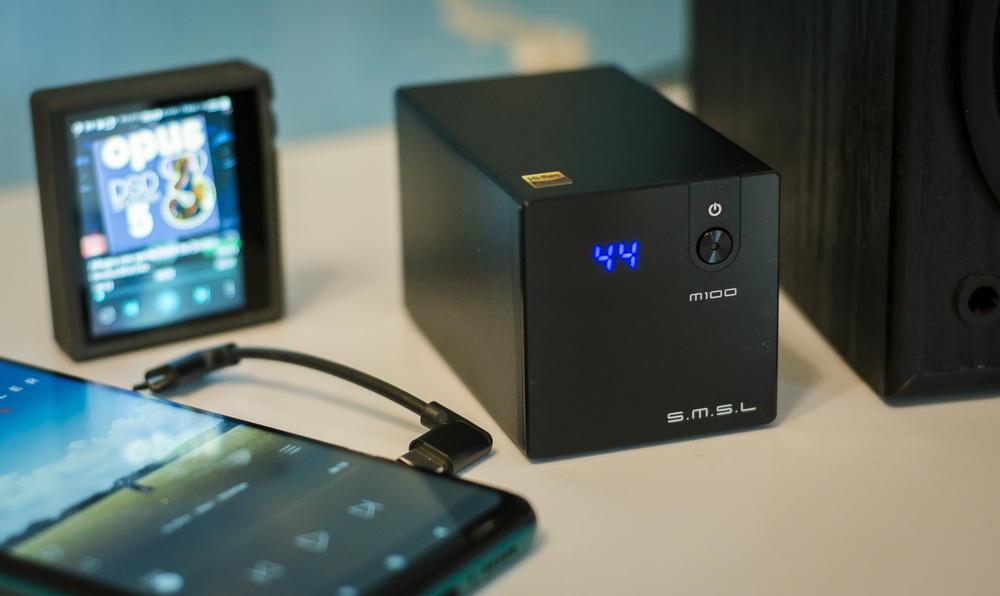
Mids and vocals:
The most of the resolving potential in concentrated on mids which still remain neutral in overall. Vocals are rich, with plenty of textures, pleasantly thick. Despite ESS Sabre DAC mids don’t tend to show monitor-like or dry sound. Neither there is a tendency towards female vocals or accented upper treble range. No harsh and screaming notes. Male and female voices sound equally natural, perfectly exposed and both have a slight touch of warmth. Most of resolution is spotted on bow and string instruments. Very good instrument separation also dedicates much to enlarged stage depth. Mids feel smooth and natural indeed.
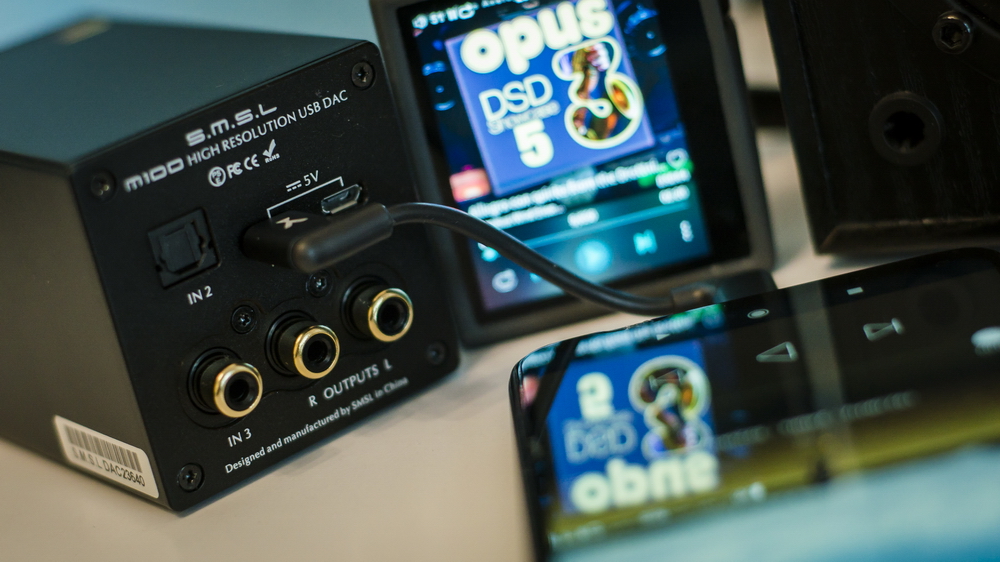
Treble:
Treble are well-balanced to other ranges and do not produce any piercing effect or cold tonality. This range if clear but not crisp. Extension is just a moderate but the amount of presence is adequate. Small amount of sibilance is produced that might slightly affect vocals and some instruments in mid range but it depends of the track quality and initial mastering EQ. Treble is accurate and transparent, although slightly simplified in general and normally compensates bass presence without resulting in any piercing effect thus allowing long and relaxed listening sessions.
Soundstage:
M100 MKII producing one of the largest imaginary stages in width and depth. When paired with the the stated headphones, at least. Stage is quite large and has precise instrument locations, well-defined contours and good layering.
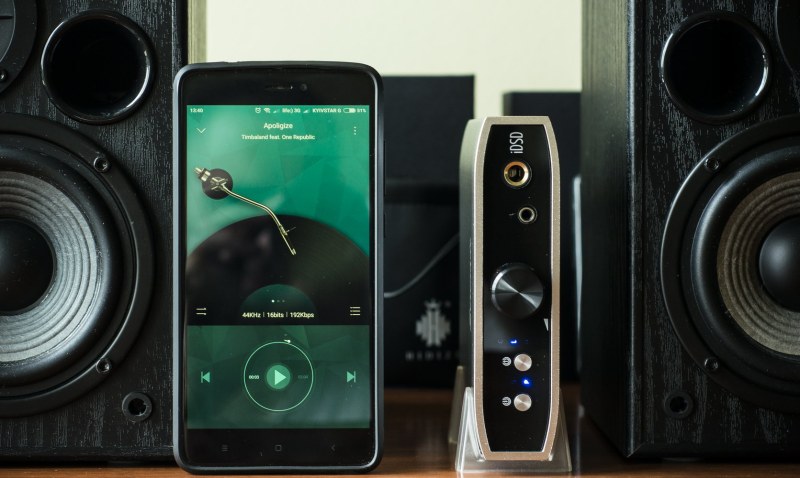
Compared to Tempotec Serenade IDSD:
Serenade is more universal since can also act as headphone amplifier. It also allows to experiment with different Op-amps, has separate volume knob and more convenient power supply. Although, sound-wise, it is more harsh on treble and not that good on lows. It also lacks good DSD support and is limited to 24/192 over USB.
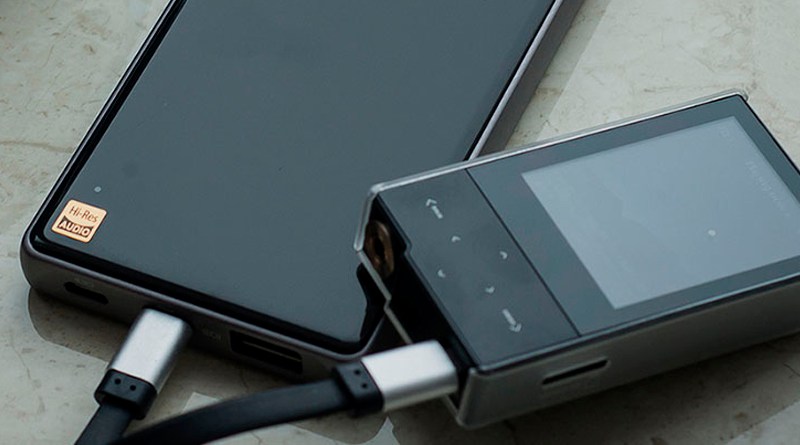
Compared to Hidizs Sonata DH100:
DH1000 is a very good PORTABLE DAC/amp. Not very good on DSD, less capable on lows but equipped with own battery, volume buttons, headphone amplifier and balanced outputs. Although, limited to 24bit/192kHz and has no RCA outputs and line out for home systems or active speakers.
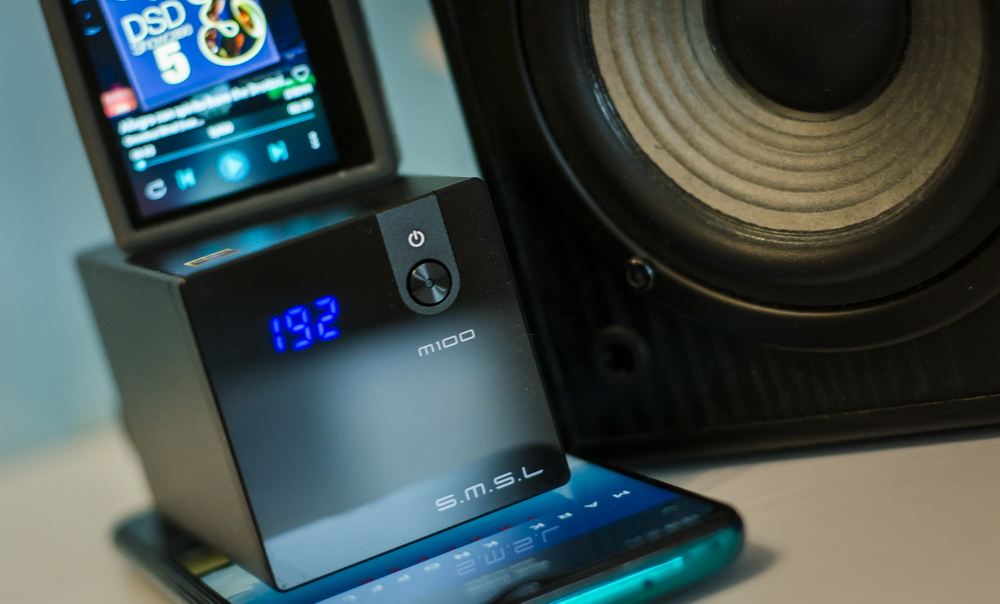
Conclusion:
Among all DACs that we have tested SMSL M100 MKII is the only “pure” desktop DAC, perfect in its simplified form factor and functionality. It does exactly what it is made for – converts the highest quality possible digital audio stream to analog signals in stationary use. Some cons in a form of limited accessories and tight space between USB ports are present but the pros are much stronger and prevail: perfect crafting, stable operations, great sound quality. It might become a bargain when searching for a good, space-saving sound converter in desktop setup to feed active speakers. Or even to work with large home audio system on DAC/pre-amp stage. The only thing to decide is whether headphones would be a part of such setup.
SMSL M100 MKII is available for purchase at Aoshida-audio store: LINK

